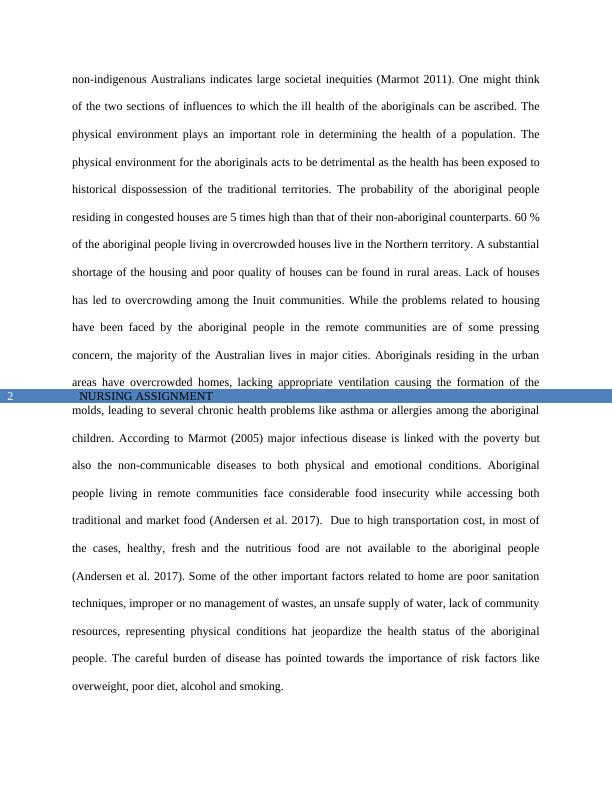Social Determinants of Health: Cultural Barriers and Physical Environment
Added on 2022-12-30
6 Pages1433 Words37 Views
End of preview
Want to access all the pages? Upload your documents or become a member.
Reasons for considering the chosen population as vulnerable
|15
|3568
|25
Health Inequality Among Different Population Groups
|5
|790
|248
Cardiovascular Disease Among Indigenous Australians
|12
|2625
|16
Critical Healthcare Practice: Understanding the Link between Poverty and Indigenous Health in Australia
|4
|509
|116
Definition of Public Health | Graduate School of Public Health
|5
|1161
|17
Health Inequalities Between Aboriginal and Non-Indigenous Populations
|6
|1262
|17



